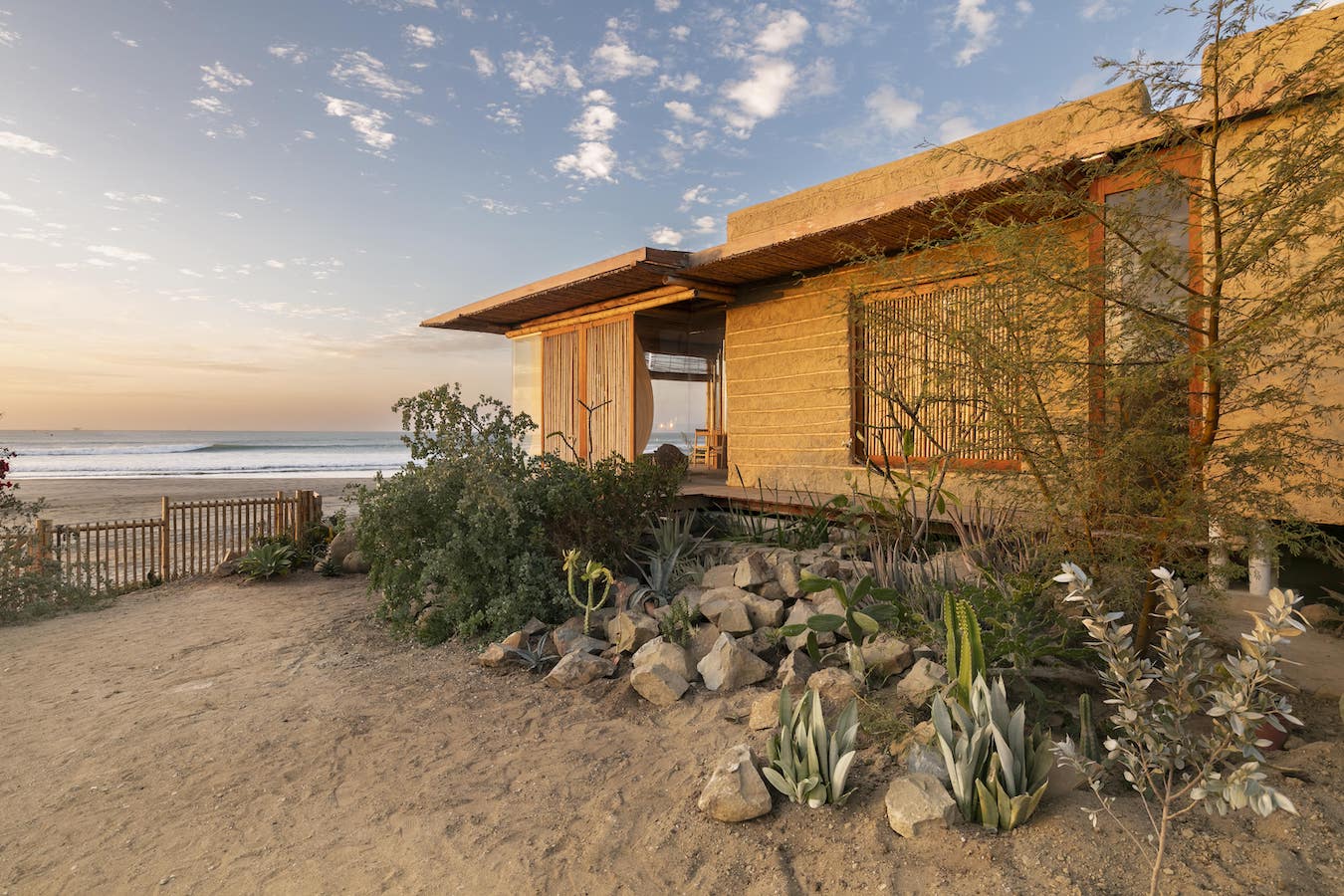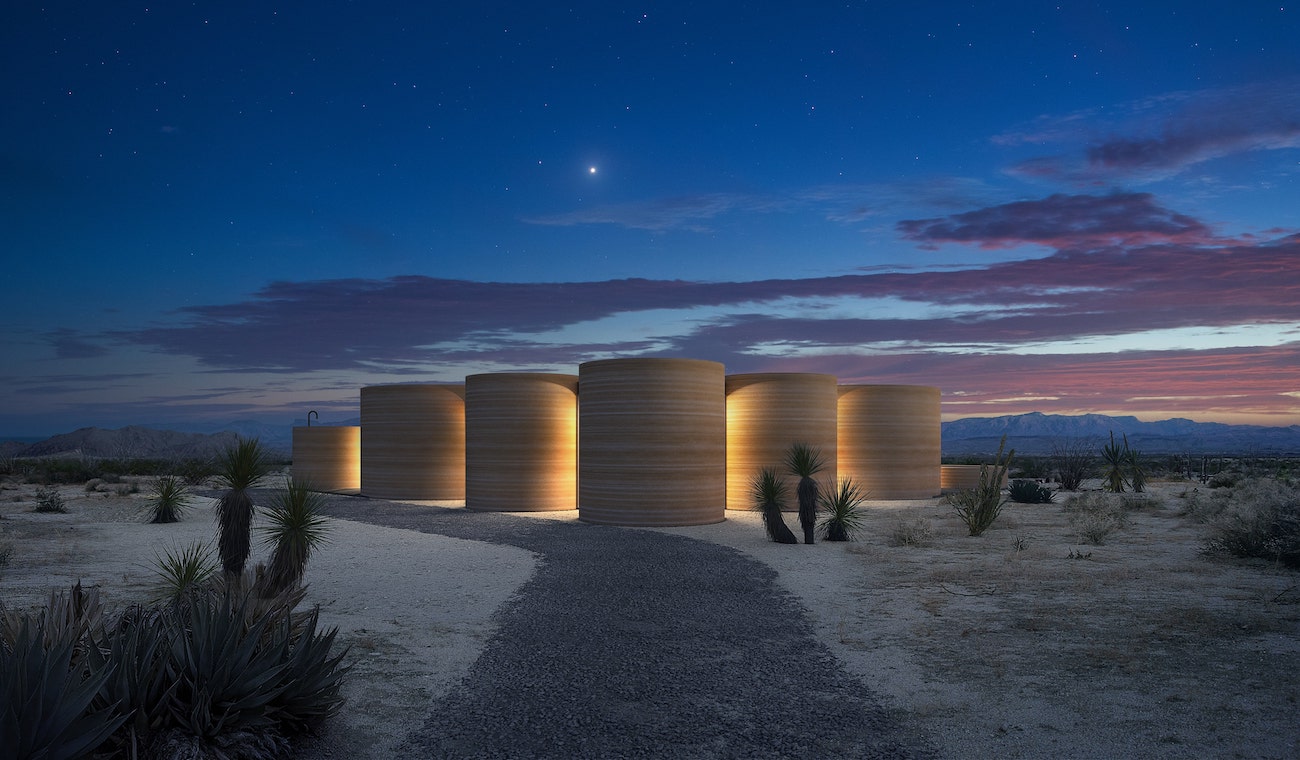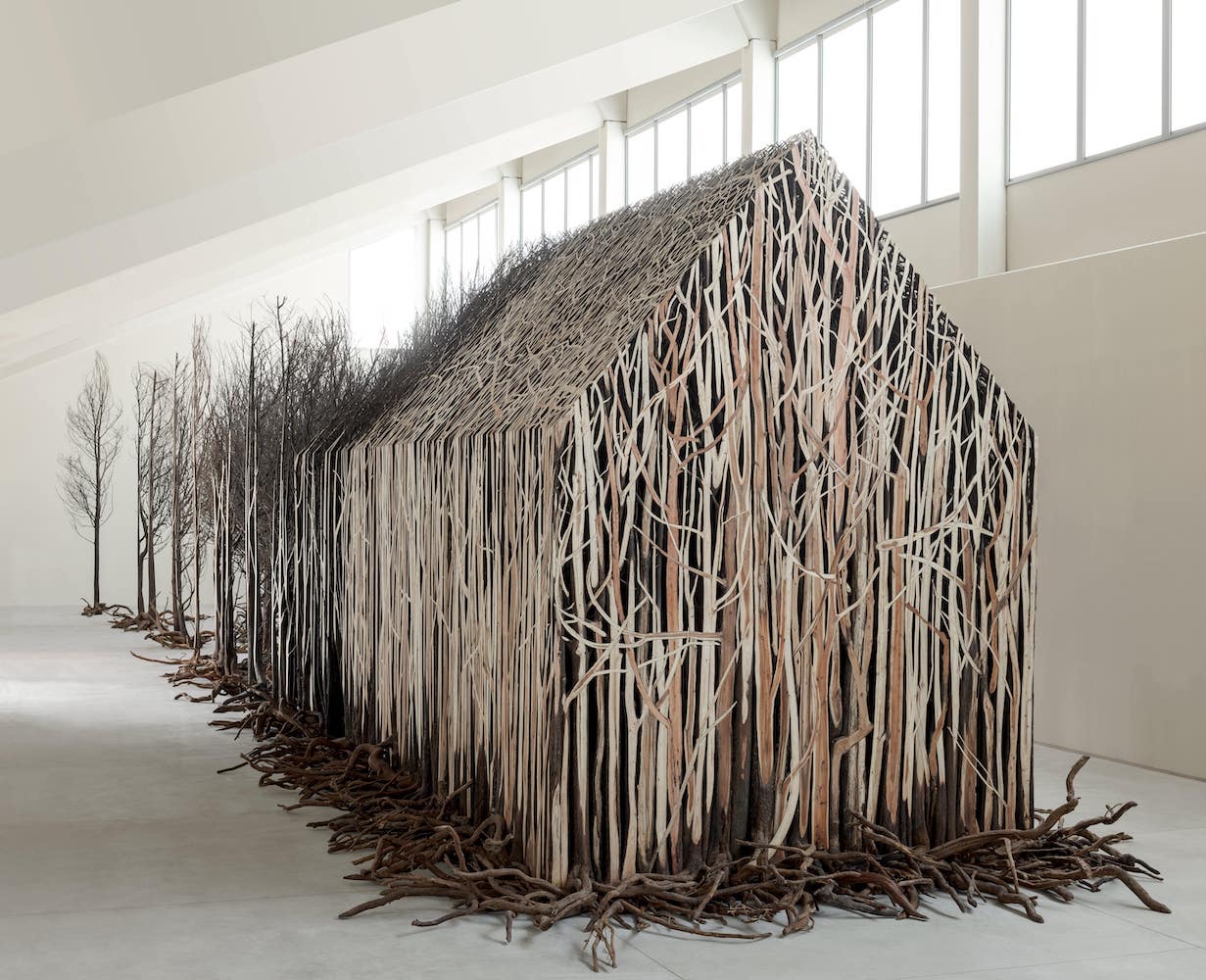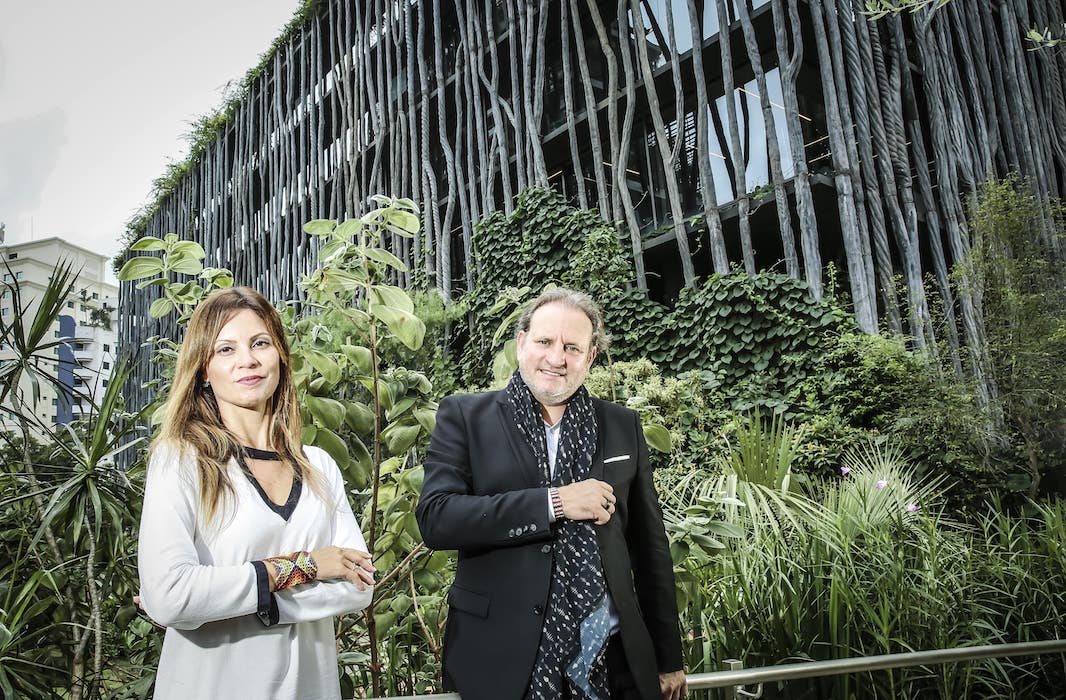Estudio Rafael Freyre Works in Service of Nature’s Cycles and the Ritual of the Everyday
In 2019, Ana Teresa Barboza and Rafael Freyre presented “Water Ecosystem” at the Lima Museum of Contemporary Art in Peru. The sustainable art installation featured woven totora and reed plants covering the floor in river-like formations, and suspended from the ceiling like natural chandeliers. Within the gallery, humidity gathered, guests wore ponchos, and rain dripped down from above. It was a result of research into the irrigation, capture, and purification of water by pre-Columbian cultures in the wetlands of Peru. It focused on the region’s air plants and water plants that act as natural filtration systems, and the ancestral knowledge of water management. Barboza and Freyre sought to recover and project these practices into the future.
“Water Ecosystem” was later part of the 2022 Sydney Biennale, where it was adapted to address local history and ecologies specific to Australia. It’s a project that embodies the ethos of Estudio Rafael Freyre, a collective of architects, artists, traditional artisans, performers, writers, and actors who actively seek to dissolve the lines between disciplines and the human experience of nature. Through explorations of raw material, organic processes, and traditional craft, they work to regain our relationship and balance with the earth’s cycles.
Freyre, who worked around the world in architecture and the performing arts before establishing his studio in Lima, sees architecture as something ephemeral—something that actually shouldn’t be permanent. To exercise this theory, he and his team built Tropical Station in Piura near the north tropical sea of Peru. The temporary house is made with nearly 80 percent local materials and resources, created by hand from clay, stone, bamboo, and earth using traditional techniques. It is a site to observe the cycles of the landscape and ecosystem, the migration of birds and whales, the shifts in recurring climate patterns like El Niño. And it was designed to be a station and station only—a mere moment in time, not meant to last forever.
Whitewall spoke with Freyre, who was living within Tropical Station, where he spends his time when not in Lima or traveling to places like Bali for future projects.
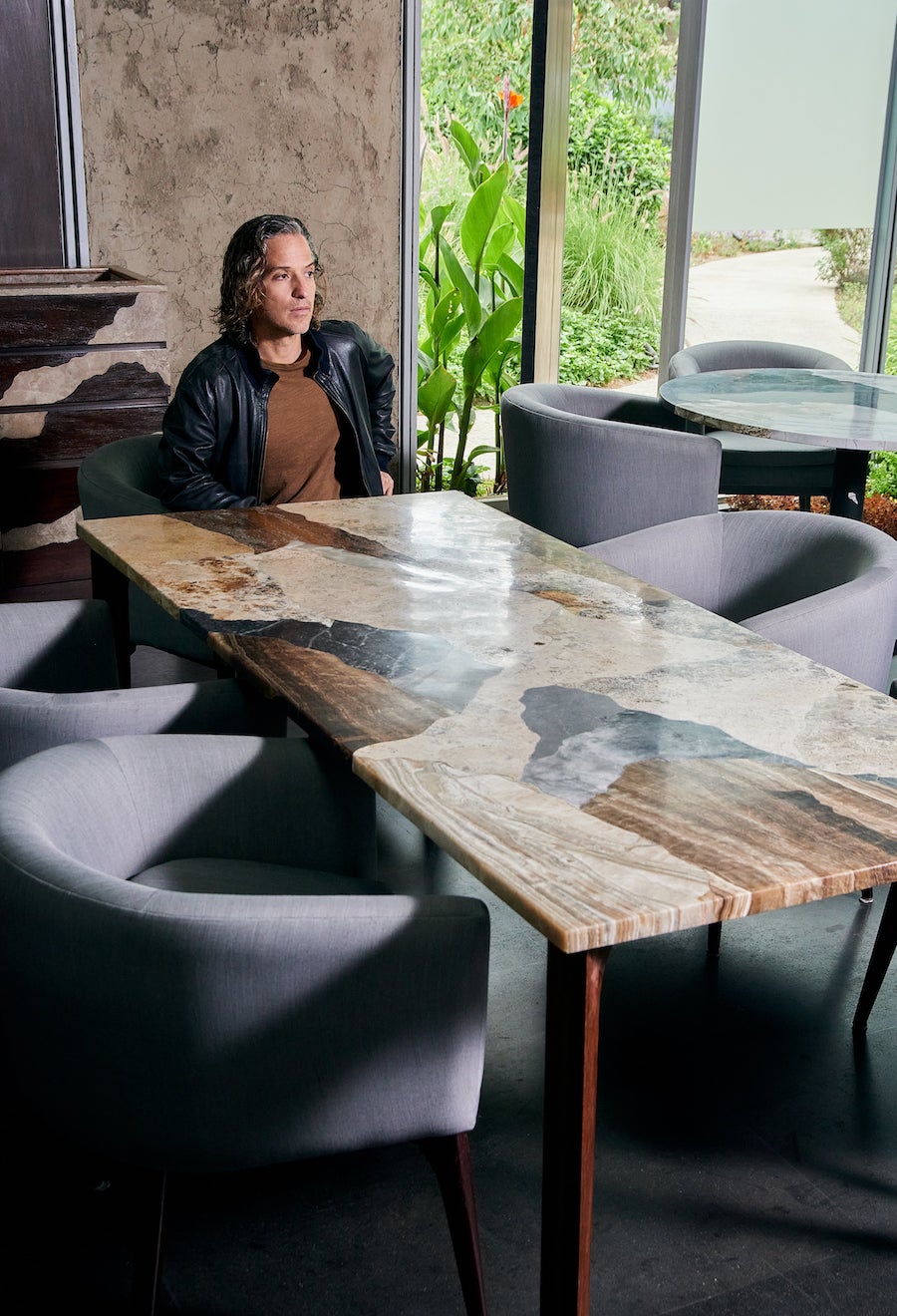
Rafael Freyre in Central, portrait by Alexander Perez-Flores.
“Nature and the natural world have cycles. What you create needs to be part of this.” — Rafael Freyre.
WW: You worked as a designer in Rotterdam and Rome, then in New York and Bali. Coming back to Peru and establishing your eponymous studio, what did you want to create? It’s a collective of not just architects and designers but artists, weavers, stoneworkers, writers, and poets.
RAFAEL FREYRE: From a young age I doubted the disciplinary separation of knowledge—that you study architecture or theater. I doubted this. I worked for many years in theater. And after working in theater, I discovered dance. And after that, I discovered architecture. There are interesting ideas in theater that help architecture, and ideas from architecture that help theater. What I experienced is that knowledge is not segmented or segregated. Knowledge is a fluid matter. It expands and connects and moves freely. You can get inspiration, and you can create by mixing and relating two or three disciplines.
When I established this studio, I tried to make a space for creation that is not restricted to one language, one discipline—one that is more open. Our first project was with gastronomy. When I returned to Peru from Italy, I began to work with stone, with water. And some of the first artists that arrived at the studio were chefs. They began a conversation, and I began to learn about gastronomy. We met with Virgilio Martínez, the chef of Central Restaurante, we began a conversation, and we began to design pieces for him. In the end, we ended up designing their new restaurant. It was an open space to establish a dialogue with all disciplines to create this project.
You are nothing but in relation with others, and in this you can propose new ideas and new possibilities.
WW: How does your process relate to the Peruvian context, landscape, and experience?
RF: The territory is one of our points of departure, but territory is not static. Territory is fluid. We have movement from the Amazon, the Atlantic, from Africa, the Andes. What is called “local” comes from another place. It moves by water or wind or migration. If you begin to understand the territory in this dynamic way, you can question what you call “local” or what you can call “from Peru.” The territory is in constant relation, in constant interchange. Plants are moving, birds are migrating, water is flowing.
WW: You’ve described your work as aiming to rebuild continuity with landscape, architecture, and the bodily experience of being free in the wilderness. How do you create that sense of freedom?
RF: As I mentioned, I worked before in theater. And in theater, you work with your body. Your body is your tool. You create relationships with your body to the space, or to objects, and you create situations and actions. So I always have this in the back of my mind when I design or create a space—I try to establish some interchange with bodies. We have made a lot of installations that people can interact with, can touch, can sit on, can create a moment.
I also think a lot about rituals. Rituals in theater are very important because theater has to do with repetition. You repeat each day a text, a character, or speech, or action. But even when you repeat, the next day it’s always different, and the next day. It’s changing always. Life is also a bit like this. You wake up, you take a shower, you take a coffee, you are repeating actions, but every time you repeat it’s also new. I think of rituals in daily life and how to create some objects or situations for that. Creating objects or space for these kinds of daily activities, ordinary actions—I love this.
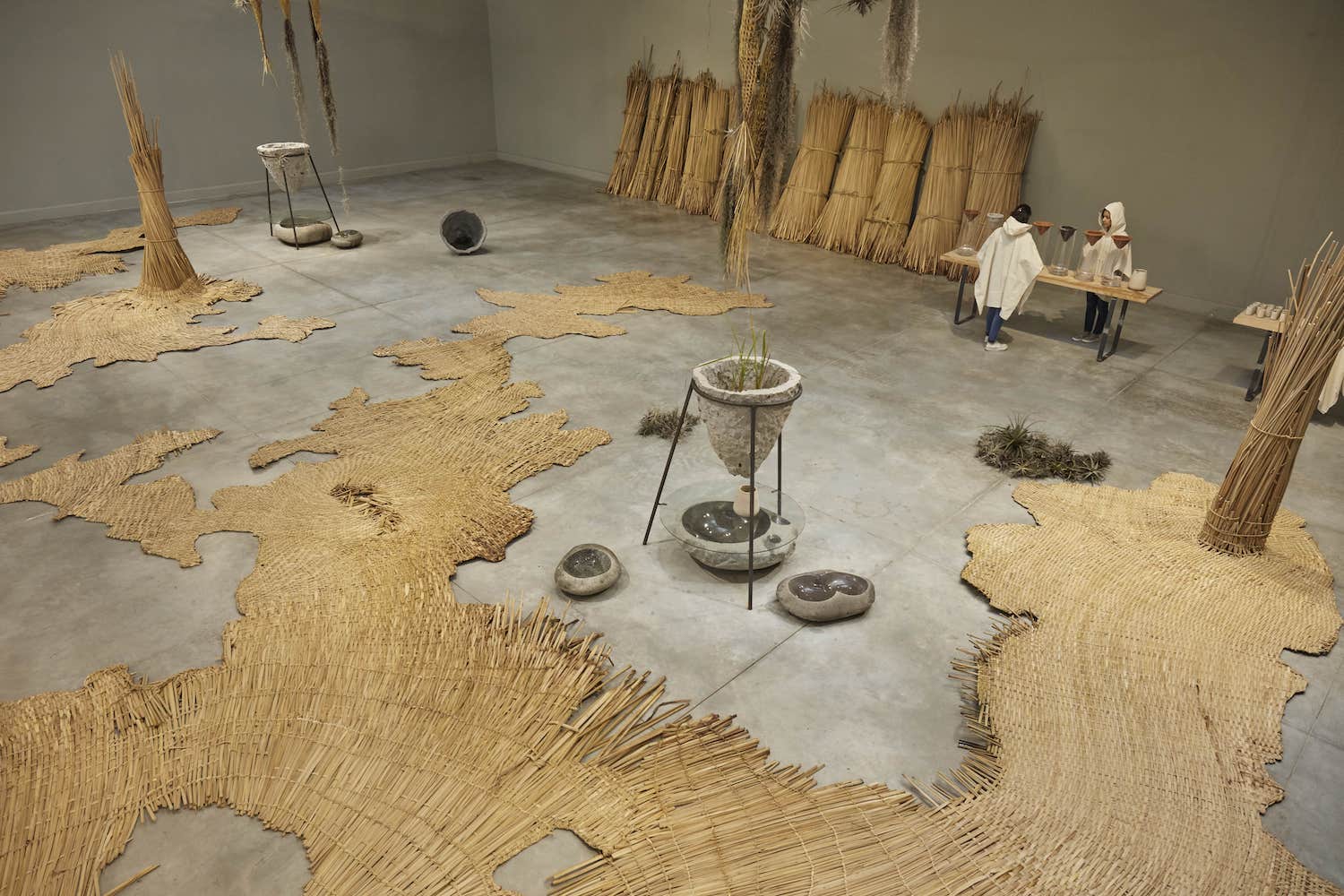
Installation view of Estudio Rafael Freyre’s “The Water Ecosystem” (2018) at MAC Museum, Barranco, Lima, Peru, photo by Juan Pablo Murrugarra, courtesy of Estudio Rafael Freyre.
WW: You’ve said that you are always thinking about space as something that is shared, never ours. So how does that relate to the way you think about a space’s footprint?
RF: I think we are in an era where we need to understand the process of everything. For example, if you make a table of wood, where does it come from? How long does it take this tree to grow? How is it cut, and who cut it? Who are the artisans?
When we design an object, we try to understand all that is different from the beginning to the future. What happens in the future with this table, what will happen in 10 to 20 years? You need to understand the cycle. And if you begin to understand architecture, art, and design in cycles, you can have an approach to what we call “sustainability” today.
Nature and the natural world have cycles. What you create needs to be part of this. You cannot create things that stay static, like plastic that takes so many years without transforming. It does not attach to a natural cycle, and that creates problems.
It’s also the idea that we don’t need to make permanent objects. I believe in the future there will be objects that are temporal objects. For example, if you build a house with bamboo or a tapestry with vegetal fibers, it will reintegrate to nature. Things should not be eternal. They should be part of moments in life. They should be part of cycles in life.
WW: Which makes me think of your experimental project Tropical Station, made from native plants, bamboo, clay, and stone, directly connected with its surrounding ecosystem. It’s meant to be a temporary habitat.
RF: Yes. Tropical Station is an idea that goes beyond the idea of a house. It questions, what is a house? The house, for us, is too sedentary, too enclosed. It’s too full of ideas around the patriarchy, of defined gender roles. So how do we create another idea that is not only for you, you can share with others. It’s a space to live with animals and with plants. It’s a place to observe the natural cycles, an observatory of the systems and transformations of a territory. From this space you can see the migration of the whales, of the birds.
We call it Tropical Station because it’s a station; it’s a moment. It’s a moment that you are here and you can relate to the territory. It’s a tropical Pacific ecosystem, and it’s always transforming, it’s mixing. It’s not big, and it’s all made by hand, using almost 80 percent of local materials—bamboo, earth. When we built the house we tried to work with the community of local construction workers to have also the tradition of constructing with earth, of weavings. We tried to make sure that every aspect as much as possible integrated with where it’s located.
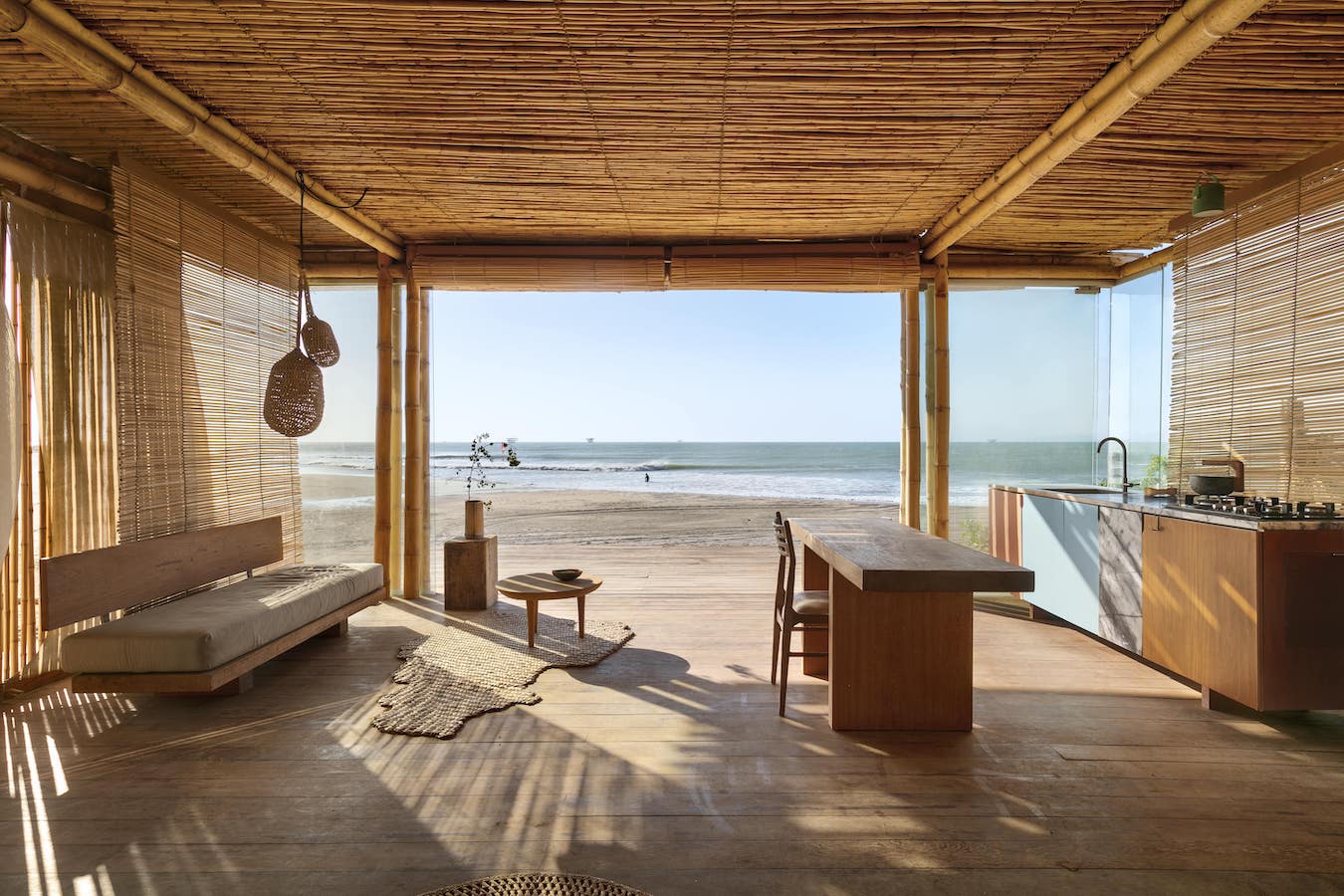
Estudio Rafael Freyre’s “Tropical Station” (2022) at Talara, Piura, Peru, photo by Eduardo Hirose, courtesy of Estudio Rafael Freyre.
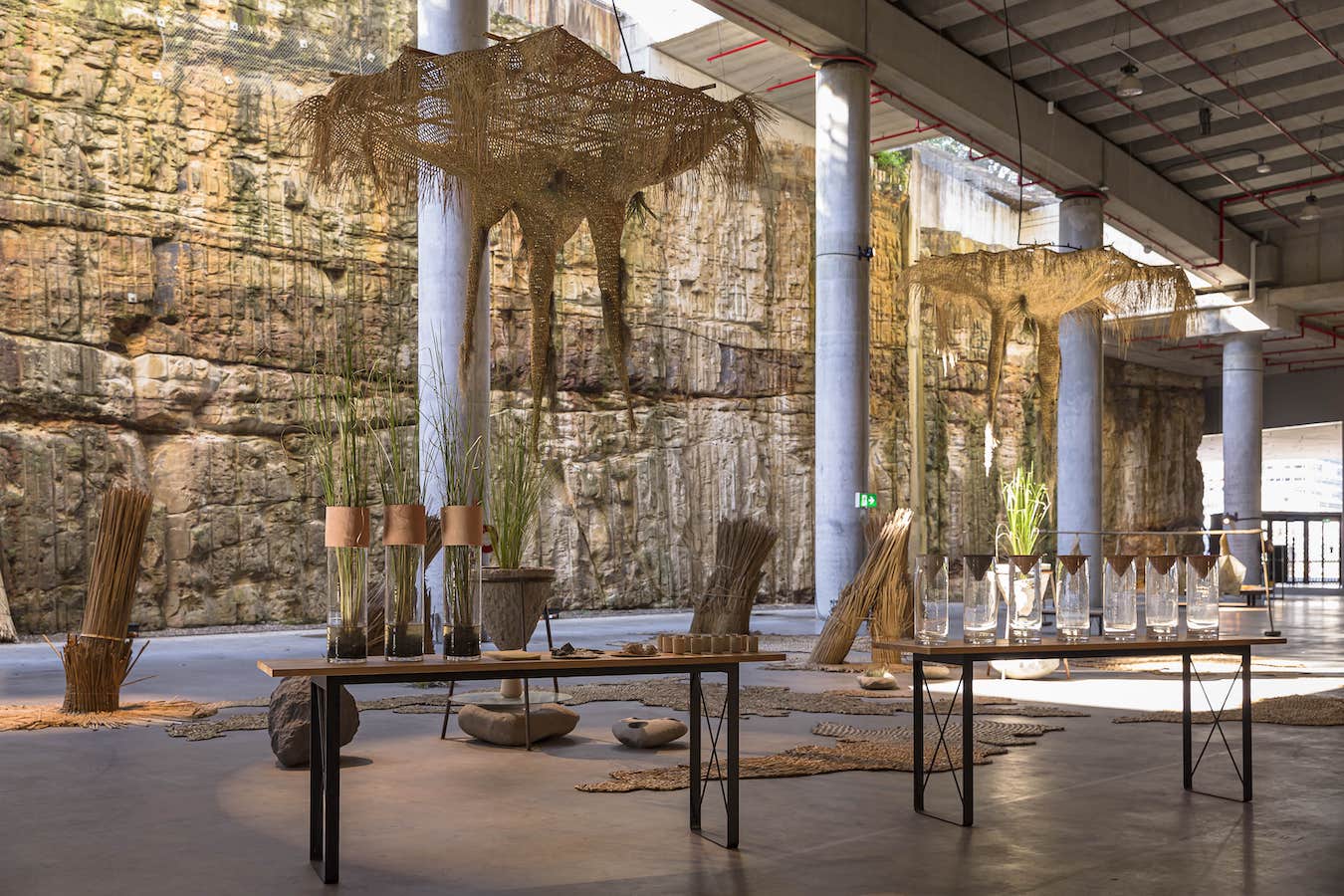
Installation view of Estudio Rafael Freyre’s “The Water Ecosystem” at “Rivus,” Biennale of Sydney (2022) at The Cutaway at Barangaroo, Sydney, Australia, photo by Document Photography, courtesy of Estudio Rafael Freyre.



